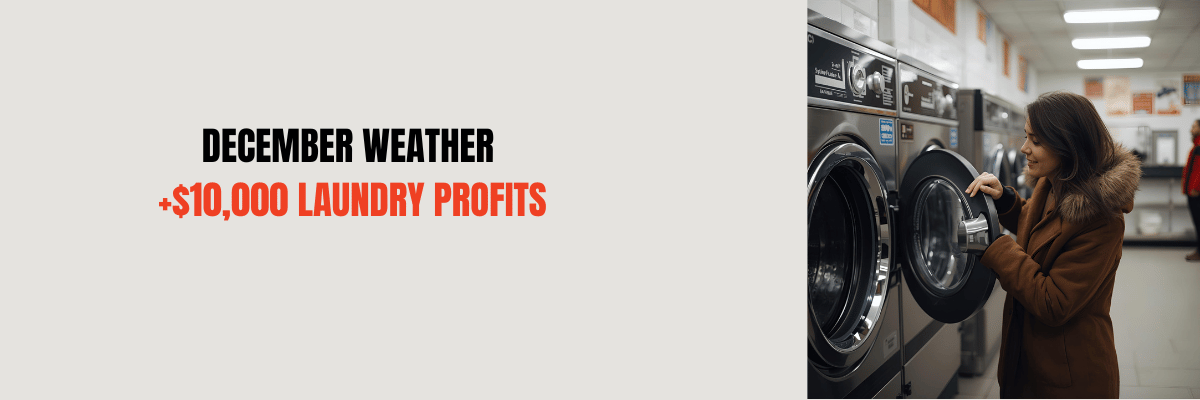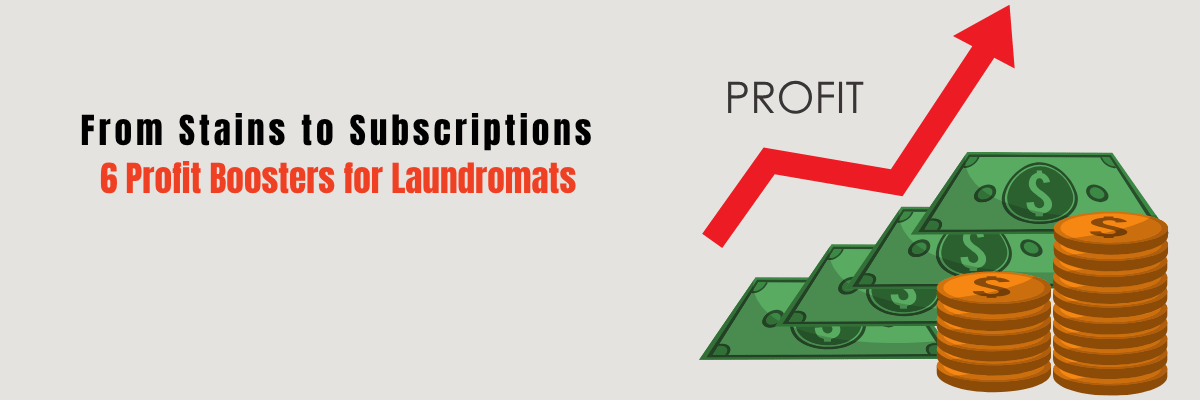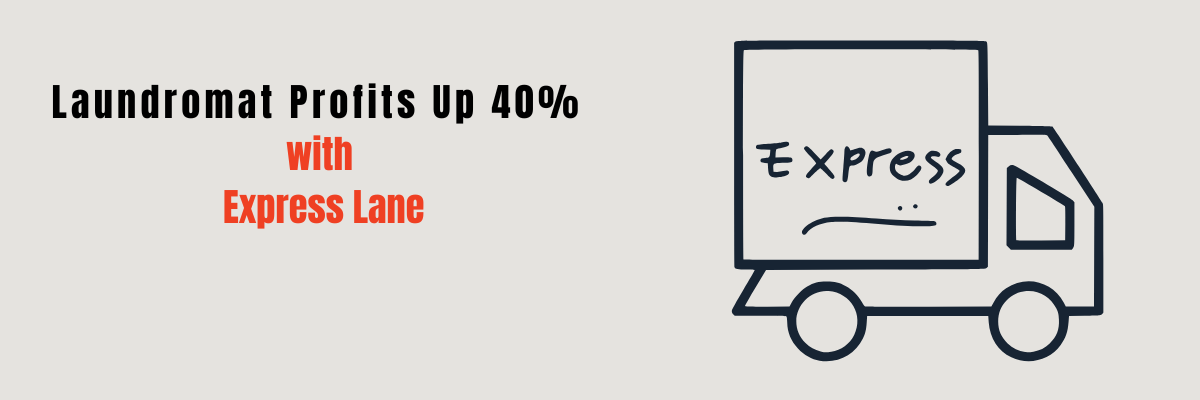Optimizing Payments in Laundromats: From Traditional to Digital Solutions


In the evolving landscape of retail and service industries, laundromats are not just about washing clothes anymore; they are about delivering a seamless customer experience. With over 31,500 laundromats serving millions of customers across the United States, the industry, valued at around $6 billion, is witnessing a technological revolution, especially in how services are paid for. The right payment system is not just a convenience; it's a crucial part of business efficiency and customer satisfaction.
The transformation from traditional coin-operated machines to sophisticated digital payment solutions mirrors the broader shift in consumer payment preferences. Recent studies indicate that 70% of consumers favor card or digital payments over cash. This shift is not just a matter of preference but also of efficiency and security. For laundromat owners, navigating these options can be daunting but crucial for business growth.
In this comprehensive guide, we will explore the various payment options available for laundromat businesses, from classic coin-operated models to innovative digital solutions. We'll delve into the pros and cons of each system, helping you understand which option aligns best with your business model. Additionally, we'll shed light on card payment systems, including the emerging role of PayRange, a platform that is redefining payment convenience in laundromats. By enhancing the payment process, PayRange not only promises to streamline operations but also to bolster your laundromat's income and security.
Join us as we unfold the layers of laundromat payment systems, and discover how embracing the right technology can set your business apart in this competitive market.
Section 1: Payment Options for Different Laundromat Businesses
Coin-Operated Systems
Coin-operated laundromats have been the backbone of the industry for decades. These systems operate with a straightforward mechanism where customers use coins to run laundry machines. This method has stood the test of time, and as of 2025, approximately 56% of laundromats in the United States still operate primarily with coin-operated machines.
Pros:
Traditional Appeal: Coin-operated machines are synonymous with laundromats, offering a sense of nostalgia and simplicity. They are particularly appealing in areas with a high population of older residents or those resistant to technological changes.
Widely Accepted: The ubiquity of coins makes this system highly accessible. Customers are not required to have bank accounts, credit cards, or smartphones, making it an inclusive option for all demographics, including the unbanked population, which accounts for 7.1 million U.S. households.
Cons:
Physical Handling of Coins: One of the biggest challenges is the physical handling and management of coins. This includes the need for regular collection, counting, and depositing, which can be time-consuming and labor-intensive. In a survey, 40% of laundromat owners cited coin management as one of the most cumbersome aspects of their business.
Limited Tracking Capabilities: Coin systems offer minimal tracking and reporting capabilities. They lack the sophisticated analytics and record-keeping that digital systems provide, making it harder for business owners to track revenue trends, peak usage times, and machine efficiency.
While coin-operated systems remain a significant part of the laundromat landscape, the trend is shifting towards more technologically advanced payment methods. This transition is driven by the need for greater efficiency, better tracking, and a desire to meet the evolving preferences of a tech-savvy customer base. In the next sections, we'll explore how card payment systems and mobile payment options are gaining traction in the laundromat industry.
Card Payment Systems
Card payment systems represent a significant leap forward in laundromat technology. These systems allow customers to use debit or credit cards to pay for laundry services directly at the machines. As of 2025, approximately 35% of laundromats have adopted card payment systems, catering to the growing preference for cashless transactions.
Pros:
Easier Tracking: These systems provide laundromat owners with detailed insights into their business. With real-time data tracking, owners can access information on revenue, machine usage, and peak operating times, enabling better business decisions.
Enhanced Security: Card systems reduce the risks associated with handling and storing large amounts of cash. They offer advanced security features like encryption and fraud detection, significantly lowering the chances of theft or mismanagement.
Cons:
Initial Setup Cost: The transition to card payment systems can be costly. Installation of card readers and the necessary software can be a significant investment, particularly for smaller laundromats. The average cost of outfitting a single machine can range from $150 to $400.
Maintenance: These systems require regular maintenance and updates to ensure smooth operation. This includes software updates, hardware repairs, and troubleshooting, which can add to the operational costs.
Mobile Payment Options
Mobile payment options, such as apps and contactless payments, are the latest trend in laundromat payment systems. These solutions offer a high level of convenience and are rapidly gaining popularity, with about 25% of laundromats incorporating some form of mobile payment option.
Pros:
Contactless and Modern: Mobile payments offer a contactless experience, which is increasingly favored by customers, especially in the post-pandemic era. They also appeal to a younger, more tech-savvy demographic.
Integration with Loyalty Programs: These systems can be integrated with loyalty programs and promotional offers, enhancing customer engagement and encouraging repeat business.
Cons:
Reliance on Customer's Technology: The effectiveness of mobile payments depends on customers having access to smartphones and a willingness to download and use specific apps.
Network Dependency: Mobile payment systems rely on stable internet connections. Any network issues can disrupt the payment process and potentially deter customers.
Comparison and Recommendations
Comparison:
Small Laundromats: For smaller operations, the cost-effectiveness of coin-operated systems might be more appealing due to lower upfront costs. However, integrating at least one card or mobile payment option could cater to a wider customer base.
Medium Laundromats: Medium-sized businesses might benefit most from a hybrid model, combining coin, card, and mobile payments. This approach caters to all customer preferences and balances the investment with potential returns.
Large Laundromats: Large laundromats should consider investing in card and mobile payment systems. The higher volume of transactions justifies the initial investment, and the added convenience can be a significant draw for customers.
Recommendations: Business size and customer demographics should guide the choice of payment system. While traditional coin systems might still be viable for certain demographics, the trend is moving towards digital solutions. A combination of payment methods can cater to diverse customer preferences, ensuring convenience and efficiency for both customers and business owners.
Section 2: Exploring Card Payment Systems for Laundromats
In the evolving landscape of payment technologies, card payment systems have become a cornerstone in modernizing laundromats. These systems not only streamline the payment process but also enhance customer experience and business operations. In this section, we explore the different types of card payment systems and how to choose the right one for your laundromat business.
Types of Card Payment Systems
Magnetic Stripe Cards:
One of the oldest forms of card payments, magnetic stripe cards store user data on a magnetic band and are swiped through a reader.
Market Presence: Despite being an older technology, about 30% of card transactions in laundromats still use magnetic stripe technology, primarily due to its widespread acceptance and ease of integration.
Considerations: They are more susceptible to wear and fraud compared to newer technologies.
EMV Chip Cards:
EMV (Europay, MasterCard, and Visa) chip cards use a small integrated chip to store user data, offering enhanced security through encryption.
Adoption Rate: With over 60% of card transactions in retail environments now being chip-based, EMV technology is rapidly becoming the standard for secure transactions.
Benefits: These cards are much harder to clone, reducing the risk of fraud significantly.
Contactless Payments (NFC):
Near Field Communication (NFC) enables contactless payments through devices like smartphones or NFC-enabled cards.
Growth Statistics: Contactless payments have seen a surge, with a 150% increase in usage in the last two years, largely driven by the demand for hygienic, touch-free transactions.
User Convenience: NFC is favored for its speed and convenience, allowing customers to pay with just a tap.
Choosing the Right Card System
When selecting a card payment system for your laundromat, consider the following factors:
Cost:
• Initial Investment: The cost of installing card readers varies, with NFC systems generally being more expensive due to their advanced technology. Digital payment systems cut laundromat startup costs by reducing the need for cash handling equipment and security measures, leading to lower initial investments.
• Operating Costs: Consider transaction fees and maintenance costs, which can vary between systems.
Customer Preference:
• Demographics: Younger, tech-savvy customers may prefer NFC, while older demographics might lean towards magnetic stripe or EMV chip cards.
• Convenience: Assess how your customers prefer to pay. In a survey, 40% of laundromat customers expressed a preference for contactless payment options.
Security:
Data Protection: EMV and NFC offer higher security standards than magnetic stripe cards, which is crucial in protecting customer information.
Case Studies:
A mid-sized laundromat in Chicago reported a 20% increase in revenue after switching to EMV and NFC payments, attributing this to the ease of use and customer preference for secure, contactless transactions.
A small laundromat chain in Atlanta found that while the initial setup cost for NFC was high, the reduction in cash handling and associated security risks justified the investment.
Section 3: The Role of PayRange in Laundromat Payment Systems
The evolution of payment systems in laundromats has taken a significant leap forward with solutions like PayRange. This section delves into the functionalities of PayRange and its impact on modernizing laundromat transactions.
What is PayRange?
PayRange is a mobile payment solution designed to offer a convenient and secure way for customers to pay for laundry services. This technology harnesses the power of smartphones to make transactions effortless.
Features of PayRange:
Mobile Compatibility: Compatible with both iOS and Android devices, PayRange is accessible to a vast majority of smartphone users.
Ease of Use: Users can simply download the app, add funds, and then pay by bringing their smartphone close to the PayRange-enabled machine.
Versatility: Beyond laundromats, PayRange is applicable in various vending and service machines, making it a versatile payment option.
Enhancing Payment Convenience with PayRange
Simplifying Transactions: PayRange simplifies the payment process by eliminating the need for physical coins, cards, or touching the machine. With just a few taps on their smartphone, customers can complete the transaction.
Benefits for Customers and Business Owners:
For Customers:
Convenience: Provides a quick and easy payment method without the need for carrying cash or cards.
Safety: Reduces physical contact, which is particularly appealing in the context of health and hygiene awareness.
For Business Owners:
Increased Customer Satisfaction: Offering a modern payment solution can enhance the customer experience, potentially leading to higher retention rates.
Data Insights: PayRange provides valuable data on customer behavior and machine usage, enabling owners to make informed business decisions.
Increasing Income and Security
Income Growth:
By implementing PayRange, laundromat owners have reported an increase in machine usage. A study showed a 25% rise in transaction frequency in establishments that adopted PayRange, attributed to the ease and convenience it offers to customers.
Enhanced Security:
• Reduced Cash Handling: With digital transactions, the risks associated with cash handling, such as theft and loss, are significantly mitigated.
• Secure Transactions: PayRange employs advanced encryption and security protocols to protect financial data, ensuring a safe transaction environment for users.
Case Example:
English Laundry, A laundromat in Florida experienced a 30% increase in overall revenue after integrating PayRange, citing the ease of payment and the added appeal to tech-savvy customers as key factors.
Increasing Laundromat Income with PayRange
PayRange is not just a modern convenience; it's a strategic tool for boosting laundromat revenue. By adopting PayRange, laundromats can tap into new customer segments and enhance the overall user experience, leading to increased usage and customer loyalty.
Attracting a Broader Customer Base: PayRange appeals to a tech-savvy, younger demographic accustomed to digital transactions. By offering a payment solution that aligns with their preferences, laundromats can attract and retain these customers. A survey revealed that 40% of millennials prefer mobile payments over traditional methods.
Encouraging More Frequent Use: The convenience of PayRange can lead to more frequent visits. Users are more likely to return to a laundromat that offers an easy and quick payment solution. Data indicates that laundromats offering mobile payment options see a 20-30% increase in repeat customer visits.
Upselling Opportunities: PayRange allows for easy implementation of promotions and loyalty programs, encouraging higher spending. For example, offering a 'pay for four washes, get the fifth free' deal can significantly increase revenue.
Security Features of PayRange
PayRange prioritizes security, ensuring that both customers and business owners can transact with confidence.
Encryption: All transactions through PayRange are encrypted, safeguarding financial data from unauthorized access.
No Storage of Sensitive Information: PayRange does not store credit card numbers on the device, reducing the risk of data breaches.
Regular Security Updates: The system receives regular updates to stay ahead of potential security threats.
Conclusion
In conclusion, the landscape of laundromat payment systems is rapidly evolving. Traditional coin-operated machines are giving way to more sophisticated options like card payments and mobile solutions such as PayRange. These digital payment solutions offer numerous advantages, including enhanced security, better tracking capabilities, and the potential to significantly increase income through attracting more customers and encouraging their loyalty.
The integration of technologies like PayRange in laundromats is not just about keeping up with trends; it's about taking proactive steps towards business growth and customer satisfaction. As we have seen, the benefits extend beyond convenience, contributing to increased security and providing valuable business insights.
Integrating digital payment systems in laundromats significantly boosts revenue. These systems attract a broader customer base, including tech-savvy users who prefer cashless transactions. They also streamline operations, reduce cash handling errors, and provide valuable transaction data, all contributing to increased average laundromat profits.
To laundromat owners and operators: the future of the industry is digital. Embracing modern payment solutions like PayRange is key to staying competitive and ensuring your business thrives in this changing landscape. Consider upgrading your payment systems today to unlock the full potential of your laundromat business. Your customers—and your bottom line—will thank you.
FAQs about Laundromat Payment Systems
Q1: What are the different types of payment systems available for laundromats?
A1: Laundromats typically offer several payment options, including coin-operated systems, card payment systems (like magnetic stripe, EMV chip cards, and contactless/NFC payments), and mobile payment solutions such as PayRange.
Q2: How do card payment systems in laundromats work?
A2: Card payment systems in laundromats involve the use of debit or credit cards to pay for laundry services. Customers can either swipe their card (magnetic stripe), insert it into the machine (EMV chip card), or use a contactless method like tapping a card or smartphone (NFC) to initiate the payment.
Q3: What are the advantages of using mobile payment options like PayRange in laundromats?
A3: Mobile payment options offer several benefits, including contactless transactions, convenience, integration with loyalty programs, and enhanced security. They also appeal to a younger demographic and can lead to increased customer loyalty and frequency of visits.
Q4: Are digital payment systems secure in laundromats?
A4: Yes, digital payment systems like card payments and mobile apps employ various security measures, including encryption and secure data handling, to protect customer information. Regular updates and maintenance further enhance their security.
Q5: Can upgrading to a digital payment system increase laundromat income?
A5: Yes, upgrading to digital payment systems can potentially increase laundromat income. These systems attract a broader customer base, encourage repeat business, and provide opportunities for promotions and loyalty programs. They also offer better tracking of business metrics, enabling more informed business decisions.
Q6: Is it expensive to install a card payment system in a laundromat?
A6: The cost can vary depending on the type of system and the number of machines. While there is an initial investment required for installing card readers and the necessary software, many laundromat owners find that the benefits in terms of increased revenue and customer satisfaction justify the cost.
Q7: How does PayRange enhance customer experience in laundromats?
A7: PayRange enhances the customer experience by offering a fast, easy, and secure payment option. Customers can simply use their smartphone to make payments, avoiding the need to carry cash or coins. The app's user-friendly interface and additional features like tracking laundry cycles add to the overall convenience.
Q8: Do I need to have an internet connection for card or mobile payments in my laundromat?
A8: Yes, an internet connection is typically required for card and mobile payment systems to process transactions securely. It's important to ensure a stable and reliable internet connection for these systems to function effectively.
Q9: Can older laundromat machines be upgraded to accept card or mobile payments?
A9: In many cases, yes. Older machines can often be retrofitted with card readers or NFC technology for mobile payments. It's best to consult with a payment system provider to assess the compatibility and requirements for your specific machines.
Q10: How do I choose the best payment system for my laundromat?
A10: Consider factors such as your customer demographic, the size of your laundromat, cost of installation and maintenance, and the type of technology your customers are most likely to use. A combination of payment options might be the best approach to accommodate a wider range of customers.






